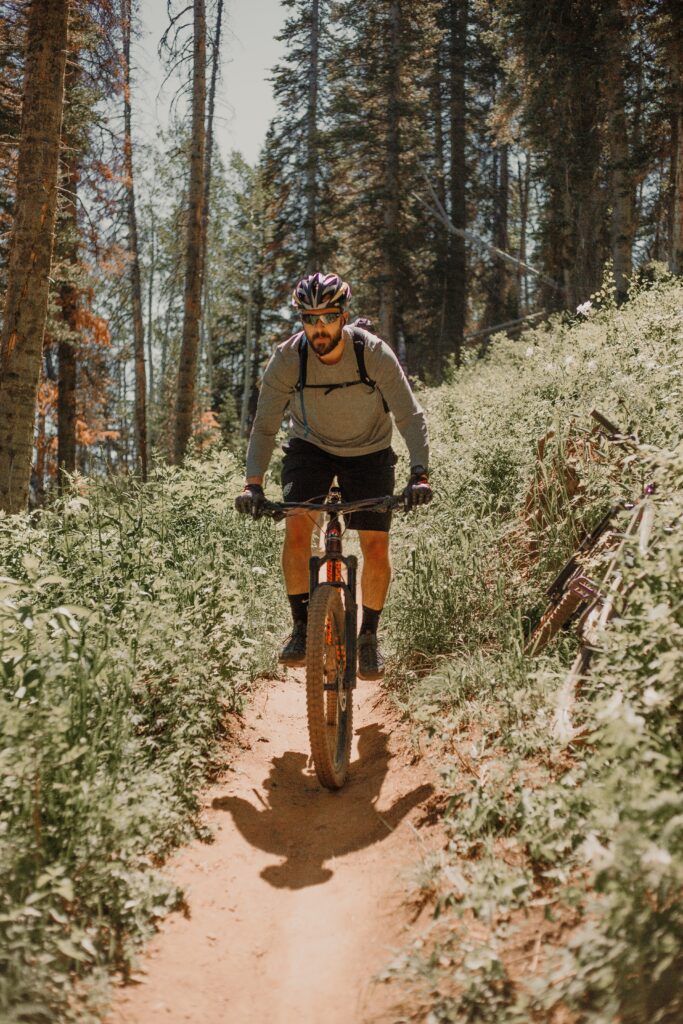WHAT TO WEAR WHEN MOUNTAIN BIKING
If it’s your first time in the mountains, bike in tow, you’ll need to inform yourself—for safety and functional reasons—on all you need to know about mountain biking.
For anyone who has ever ridden a road bike and tried to take it on a mountain dirt path, they’ll be quick to agree with this statement: mountain biking is most certainly not the same as road biking—from the actual experience itself to the equipment necessary to the preparation needed.
So, if you’ve just had experience riding on the open road, it’s time to think about approaching mountain biking a little differently. You literally have to conquer a mountain—so listen up!
Simply by first taking a look at a mountain bike and comparing it with a road bike you’ll quickly see—there are some very distinct differences between the actual bikes themselves. So, if the equipment is different, then the biker’s appearance should be, too.
Although it’s obviously possible to bike up a mountain in whatever you want to wear, you’re not here to meet a mediocre level of biking—you want to be the best mountain biker you can be!
In this article, we’re going to give you an easy-to-follow guide on what to wear when mountain biking, answering questions from “Why cycling shorts?” to “Do I have to…?”.
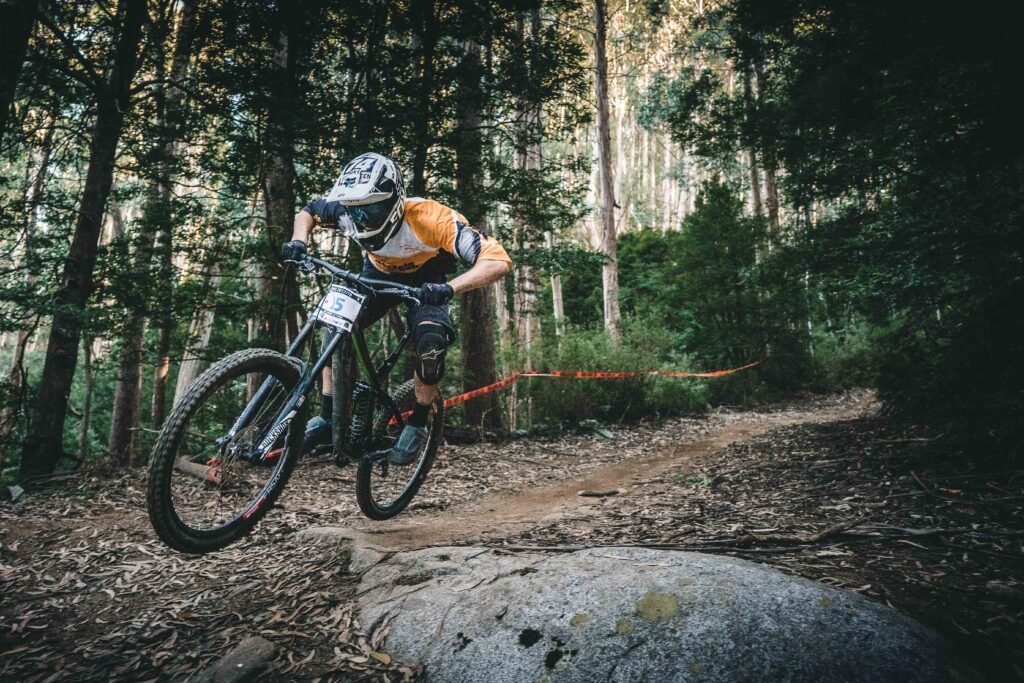
The Mountain Biking Attire:
If you forget everything you’re about to read, at least remember this: the number one rule behind wearing what you wear is protection.
The better your protection gear is, the obviously more protected you’ll be and less likely to get injured.
As we mentioned earlier, mountain biking is not like road biking. You’re going to encounter bumpy, uneven surfaces, brush, branches, rocks, and even tree roots jutting out from the ground.
All of these things can make for a rough ride. If you’re not wearing the proper gear, then you’re more than likely putting yourself in a position where you can get really injured!
From head to toe, let’s get into what it takes to have proper mountain biking attire:
Mountain Biking Helmets
As we mentioned, safety first! A helmet’s primary purpose in your mountain biking attire isn’t to look good or match with the rest of your outfit. It is to help protect your head!
Especially if you’re planning on biking on dangerous terrain on the side of a mountain or hill.
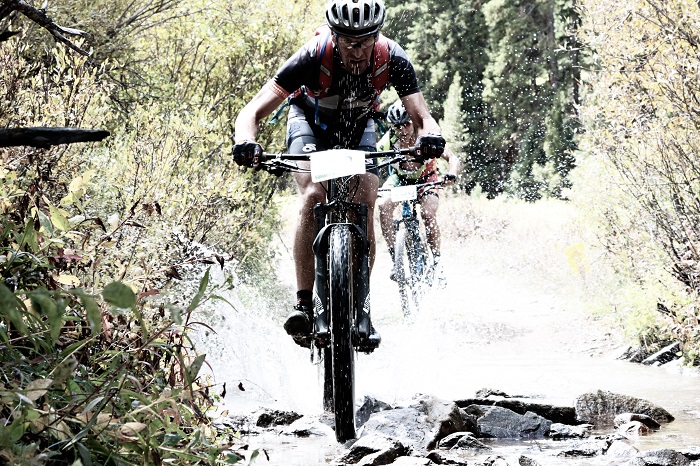
You’ll definitely want to pay extra attention to the kind of helmet you’re investing in, since that can make a major difference between even life and death!
If you’re also planning on heading down a steeper descent or a terrain that requires more skill than average, you’ll want to consider a biking helmet that offers more coverage.
The type of helmet can also change depending on the type of “mountain biking” you’re doing—yes there are more than one!
All-Mountain—For more of an expert biker, this ride includes steep and high-speed descends, which means you’ll be going really, really fast! Your helmet should definitely include a detachable chin bar for those bigger descents and provide more coverage than a road bike helmet.
Trail—If you’re off-roading on your local bike trail, you should consider more coverage, too. With technical, bumpy terrain, trail riding requires much more coverage and protection than other types of helmets. You’ll want to look for a helmet that is long on the sides and back.
Cross-Country Riding: You can be a bit less-is-more with cross-country riding as opposed to all-mountain terrain. Since you need to gain speed on the uphill, you’ll need an aerodynamic helmet that allows for that.
Skate park Riding: If you’re looking to land cool tricks on the half-pipe, you’ll need a full-face helmet—and even consider a pair of goggles or glasses to go along with it.
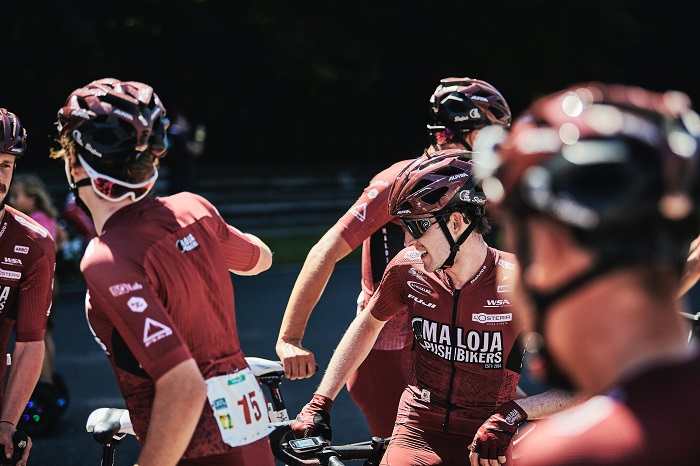
Mountain Biking Jerseys
As we move south of the head, you’ll want to pay attention to the type of shirt you wear when mountain biking. Fortunately, there isn’t much of a difference between road style jerseys and mountain biking jersey.
Just like road biking, you’ll want to have the material in your jersey that wicks away sweat efficiently to help keep you dry on the ride.
The jersey should also be close-fitting so you’re aerodynamic, but could possibly be a bit looser than road-bike jerseys because of the circumstances. You just don’t want them to be too loose for fear of snagging on low-hanging branches, etc!
To help you remain covered throughout the ride, you’ll want to consider long sleeves, which can provide additional coverage from brush and branches.
On a jersey, a ventilating front zip is always a great idea, too—whether it gets hot or cold, you can always adjust your jersey.
Cold-Weather Mountain Biking Jerseys and Jackets
If you’re planning on weathering the cold winds and temperatures, you’ll need to think about a jacket that can effectively keep off the wind and the rain. Especially if you’re planning on biking uphill, you’ll want to make sure you’re not super warm to begin with—this can cause some overheating as you continue to climb.
The outerwear for a mountain biker will have more durable fabrics than those for road biking. This allows for more wind protection as well as shoulders and coverage.
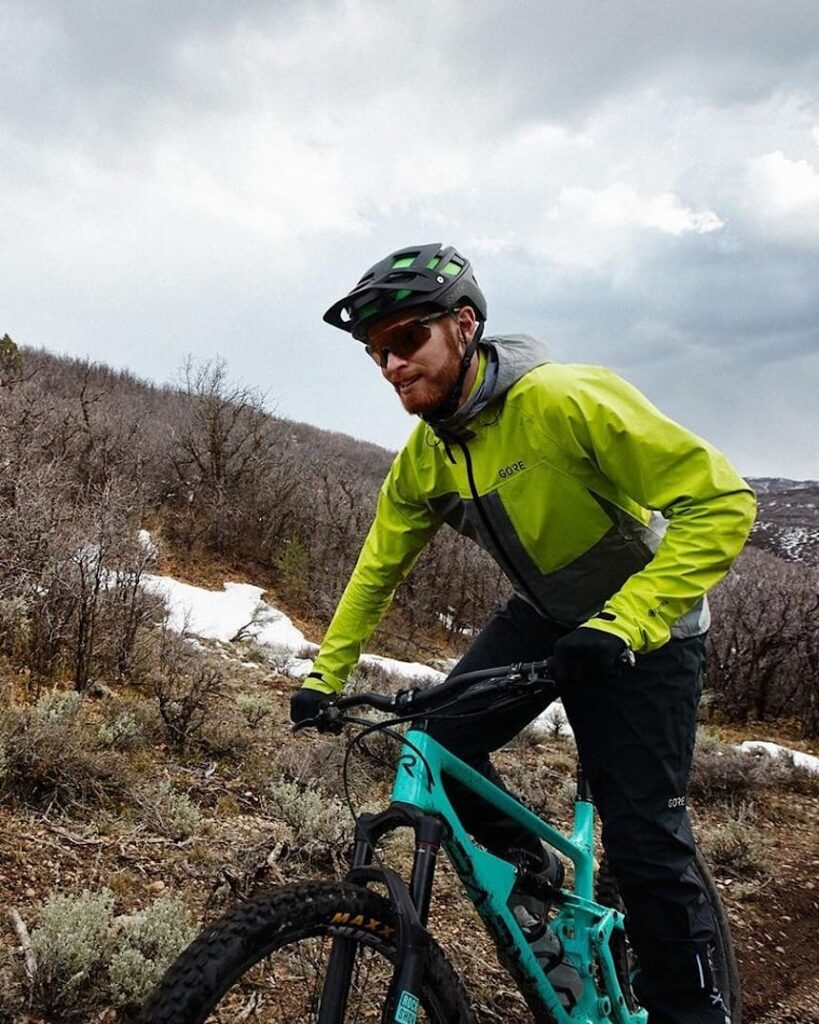
A helmet-compatible hood on your jacket is also a great idea, as that can help eliminate the rain or snow in your face.
If you’re looking for a jacket, you’ll definitely need a waterproof/breathable jacket—if you can fold it up and fit it somewhere in a pocket without it weighing down your ride, that’s a bonus! It can help you carry it along with you if you’re expecting rain or snow but it hasn’t arrived yet.
If you’re planning on layering up, make sure you pick shirts or undershirts that are wicking, warm, and lightweight. You don’t want to go with cotton—rather choose shirts that are made of wool, polypropylene or nylon.
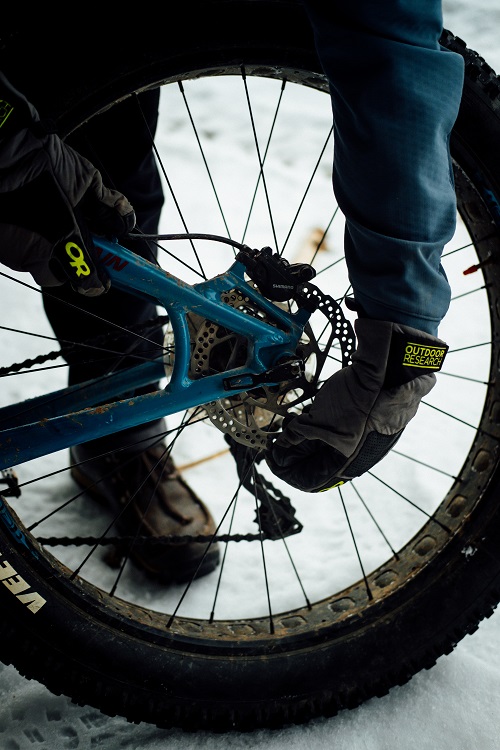
Mountain Biking Gloves
Heading down the body, although you can probably get away with wearing the same gloves as you do on your road rides, you’ll want to think about investing in a pair of gloves that are specifically designed for mountain biking.
Since mountain bike handlebars are normally padded, you don’t have to worry too much about padding on the gloves. However, if you do plan on going for long rides, you might want to consider them to help you stay as comfortable as possible.
Full-fingered gloves are recommended, even if they bring on sweatier hands.
Since the terrain is a bit rougher on a mountainside, you need to be ready for low-hanging branches and falling.
Mountain Biking Shorts and Padding
Whether male or female, wearing proper biking shorts with ample padding can make your ride not only much more comfortable but also safer.
Biking shorts are tailored to have a stretchier fabric so you’re able to move, stretch, and extend without having to worry about your shorts bunching up! The fabric that you’re going to want to go for should also reduce friction and wick moisture/sweat away to keep you dry while riding.
If your shorts don’t have enough padding as it is, you can consider either buying a completely new pair or investing in some padded liner. However, you might find that most mountain biking shorts have less padding than roading padding since you’ll be alternating more between upright, seated, and standing positions while going up and downhill.
Since you’ll be mountain biking, these shorts should be made with a bit sturdier of fabrics than road biking since you’ll be running into more twigs and other wood, snag-possible objects.
If you’re not a shorts-wearer, you can also consider investing in a good, thick pair of biking tights, which are also padded for comfort. These are great when it’s cold outside. However, you’ll also want to make sure they’re waterproof or breathable for the hot weather or when it’s wet outside.
Mountain Biking Footwear
The type of footwear you buy for mountain biking can also change depending on personal preference. There are so many to choose from!
To help you pick the right one for you and your feet, make sure you consider these four factors:
- Walkability: Especially if you’re a beginner, you might find yourself walking over obstacles at first. If you’re not able to walk comfortably in your biking shoes, this can be difficult!
- Weatherproof: Lastly, they should be water or weatherproof. If they’re not, you can also consider buying shoe covers that do a sufficient job of keeping your feet dry.
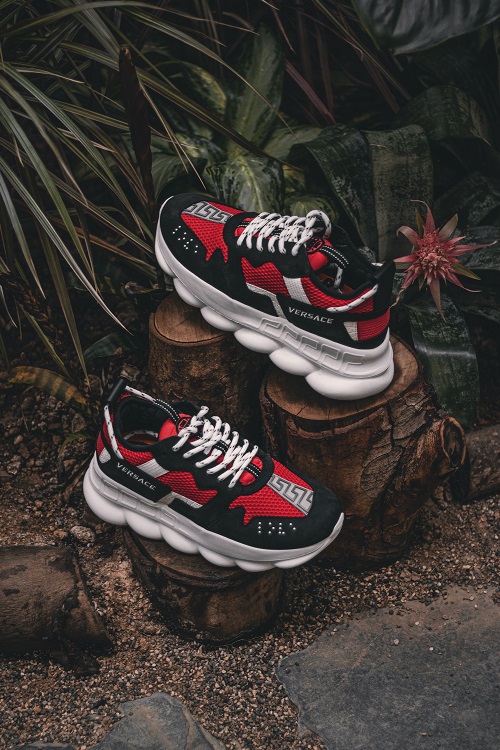
- Pedaling: Obviously, one of the main reasons you have your mountain biking shoes are to pedal in—so make sure they’re not only efficient with this but also comfortable. You also need to consider if they’re compatible with your mountain bike!
Last-Minute Gear
And lastly, if you’re planning on bringing a ton of gear along on your ride, you’ll want to consider a biking pack to hold it all in! We hope this article has helped guide you through everything you may need for a successful mountain biking ride.

